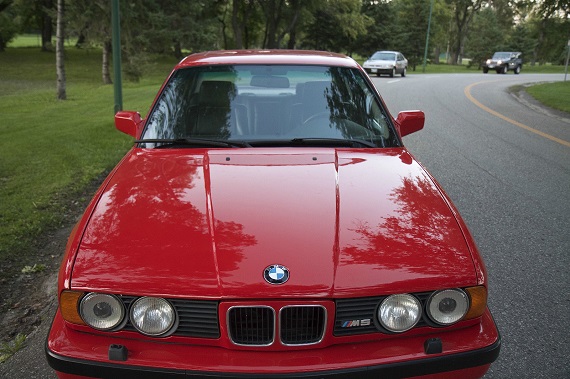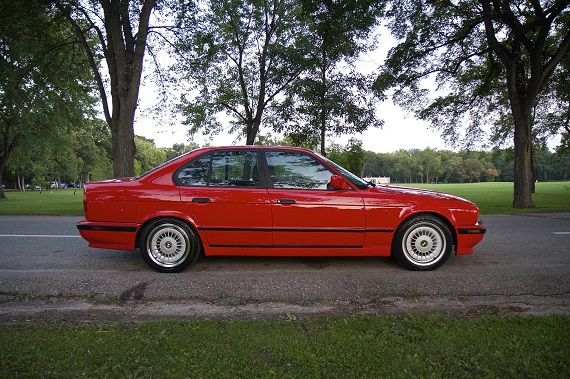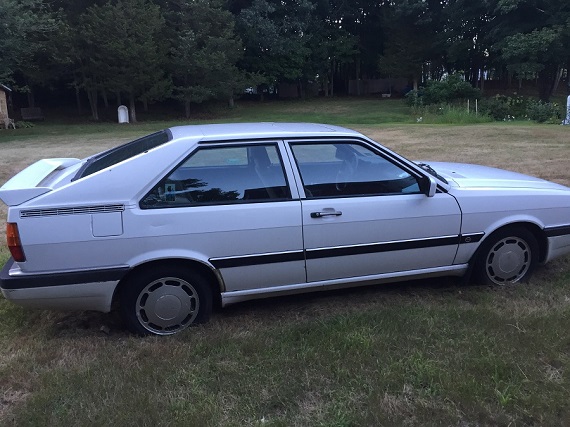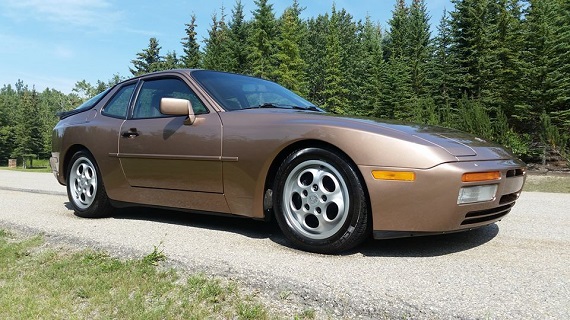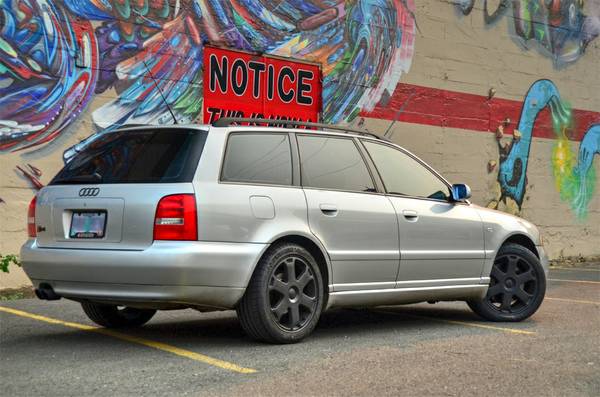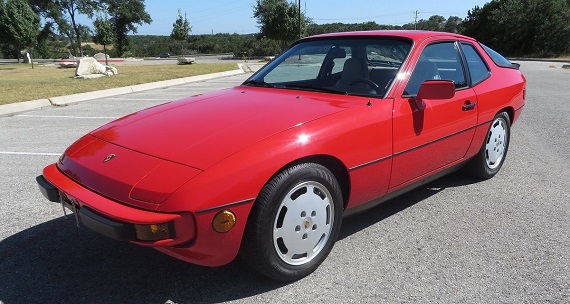One could argue, pretty convincingly, that the E36 M3 is the best value if you want an M car right now. Good examples can still be found under $10,000, parts are plentiful, and there’s a huge selection of examples to choose from. But for me, the best value has to be the E34 M5. First off, if you’ve never seen a used advertisement for a second-generation M5, you might have missed that these supreme sedans were the last of the handbuilt M models. If you hate movies, you might have missed that a M5 was also an unsung hero in the cult classic Ronin, even if it couldn’t get away from a Citroen and the S8 was more memorable. If you’ve been living under a rock, you might not know that it’s father – the original M5 – is currently on a fairly steep appreciation curve. Yet the second generation M5, while considered a bit softer than the E28, was a potent sleeper nonetheless. And for me, it’s the ultimate M car; not because it’s the fastest, prettiest or most valuable; but because it expresses the ethos of what made BMW great. A Spartan warrior wolf in taxi-cab clothes, the M5 combined literal race-bred technology into an easily digestible package; it was a pleasure to drive fast or slow, it was reasonably reliable (and especially so considering the performance envelope), and yet unlike Porsche Turbos, Lotus Esprits, Chevrolet Corvettes or any other “sports” car that offered similar performance, it was a stealthy package – it was the adult choice. In 1991 if the M5 was graduating high school, it would have been Valedictorian and voted “most likely to succeed”, but it would have gotten my vote for “most athletic” and “prom king” as well – it’s that good. Despite these superlative qualities, a reputation second to none in terms of quality and driving experience, the E34 M5 still hasn’t caught on as a market darling:
Author: Carter
For those of you who follow the blog, my affinity for the Audi Coupe GT will come as no surprise. Few cars embody the “more than the sum of its parts” ideology better than the GT; a competent cruiser, fun to toss around corners, reliability and longevity all coupled with great and unique looks to create a package that was better than its peers. Previously, I’ve covered some of the history of my 1986 Coupe GT 20V; a unique car that’s been with me since 1998. Still running strong and delivering smiles, it is the third of four coupes that passed through my hands. It’s also an interesting example; a non-Commemorative Design car, it was one of the few 1986s delivered with a digital dashboard and in the rare shade of Oceanic Blue Metallic. I’ve also owned a Tornado Red, Graphite Metallic and another Oceanic Blue Metallic example – but there was one I always really wanted; a 1987.5 “Special Build” in Alpine White.
A few weeks ago, I received an email from a friend with the subject line “Coupe for sale”. Of course, I didn’t hesitate to open up the email even though I was on vacation and not looking to buy a car. But the message inside was too intriguing to pass up; my friend told me he could get a whole car minus wheels and radio for free – did I want it? The questions went down the rabbit hole; what color was it? White. What year? 87. And, according to my friend, it looked very solid. With each answer, my hopes increased. I asked for pictures; worst case, I could grab some parts for it. The picture above was the first one I got; there it was, a 87.5. I could tell right away by the white spoiler, mirrors and window trim. The wheels were wrong, but as they were slated to stay with my friend that didn’t worry me. Inside, the interior looked remarkably clean and velour – more on that later. The downside to all of this? It was non-running and an automatic. Still, the images revealed a shocking number of NLA parts for the GTs that were just too good to pass up. The pictures showed a uncracked windshield (European order only these days), both front reflectors (NLA from Audi and trading for more in pristine shape than some whole cars), and the entire compliment of lower grills (also NLA from Audi and hard to find an entire set).
8 CommentsThe last few transaxles I’ve looked at have been a bit eclectic; the 944S was a well priced, good looking driver candidate, but the Turbo S and 924S were both high dollar, ultra-low mileage examples. Is there still a mid-ground? Absolutely, because if you’re willing to look just north of the asking price of many of the normally aspirated models from the 1980s, you can look at the lovely and high performance version of the breed, the 944 Turbo. Introduced in 1986 and upgraded virtually every year, each Turbo model has impressive driving dynamics, are capable of triple digit cruising and are capable and reasonable reliable exotics. Today’s example is presented in more rare to find Nougat Brown with brown Porsche Script interior:
CLICK FOR DETAILS: 1987 Porsche 944 Turbo on eBay
Comments closedLast week’s 10K Friday Colorful Carriers was a bit of a letdown; sure, the colors were great, but the only manual was the B6 V8 S4 Avant, and while it was a cool package there was no denying the trepidation with which I’d approach that particular package. To remedy that issue, this week I’m again focusing on some haulers capable of hauling; we’ve lost the color pallet but all of these Avants are turbocharged and manual, just the way most like it. So, this time around, which is the pick of the litter?
CLICK FOR DETAILS: 2001 Audi S4 Avant on Portland Craigslist
5 CommentsEarlier this month, I wrote up a 1988 944 Turbo S in Silver Rose with a scant 7,000 miles covered since new. As with all Porsches, the “S” models have enjoyed a long history of being…well, “Super”. But it took a fair amount of discipline, vision and means to buy an example new and project that it was going to be a collector in the future; especially considering that in 1988 the market on collector Porsches was very, very different. It has only been very recently that watercooled examples have started to appreciate, and even then not all examples have trended upwards. Even with that Turbo model, factoring in inflation the seller would actually be losing money having held onto and not driven that example more than 250 miles a year. How about something more strange – a car that isn’t really considered a collector by many? A great example is today’s 924S – long forlorn by the Porsche community, a greater appreciation for them is only now growing. So what would you pay for an example that has only covered a even more outrageous 125 miles each year since new?
